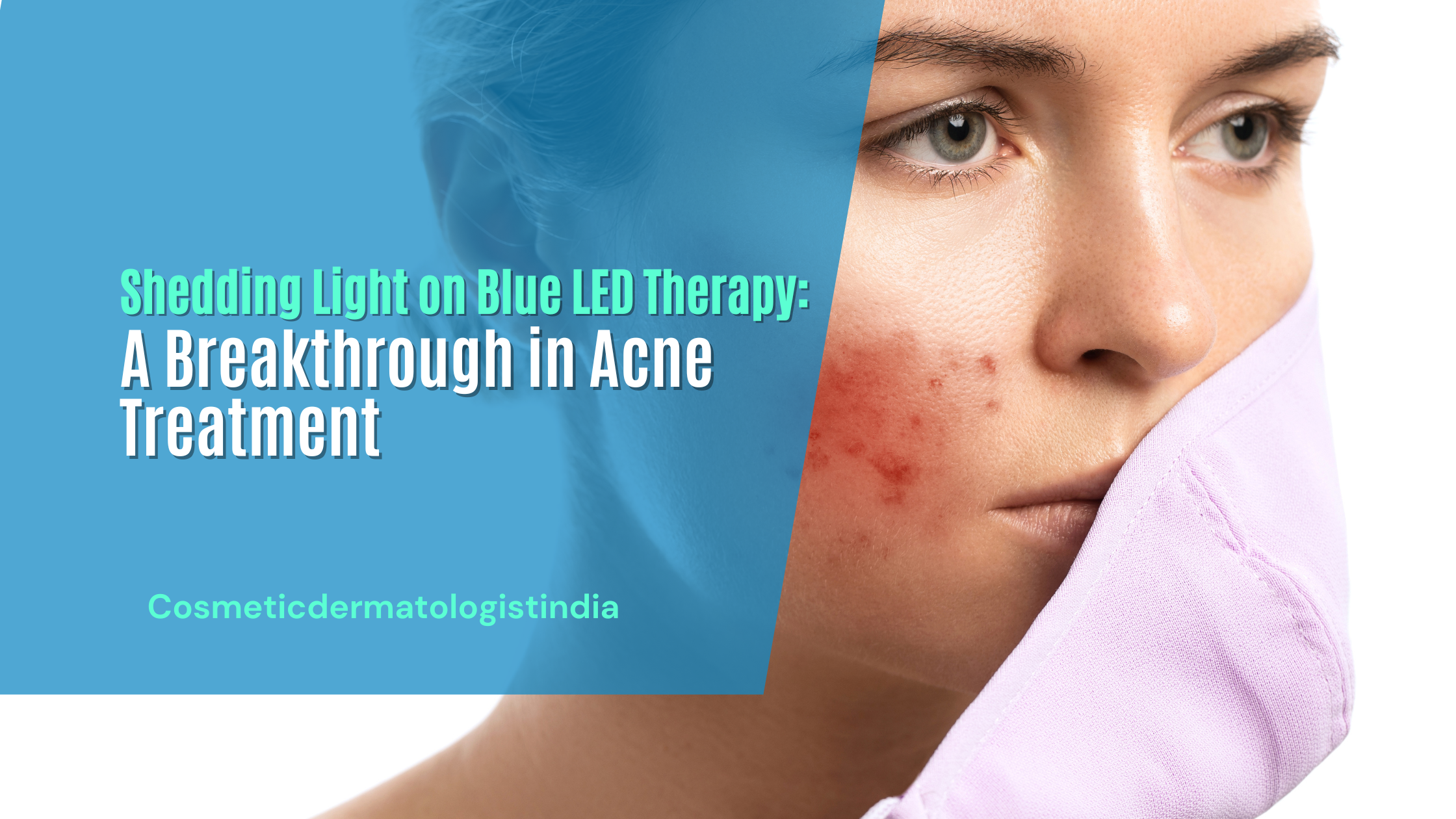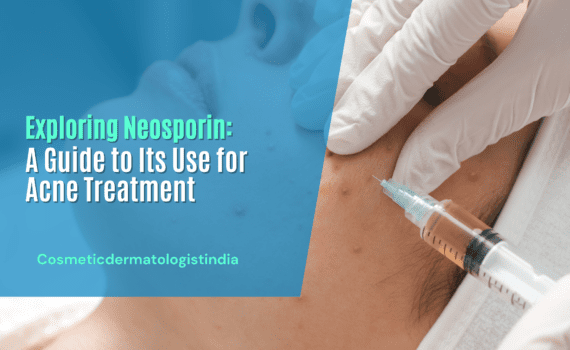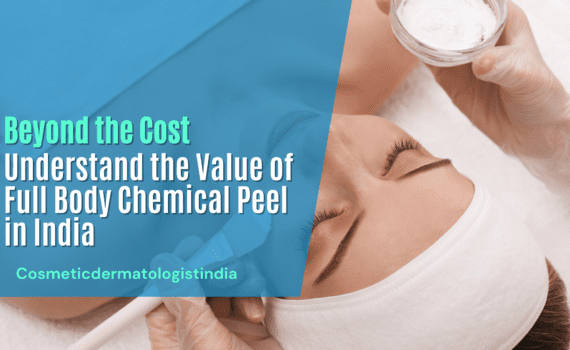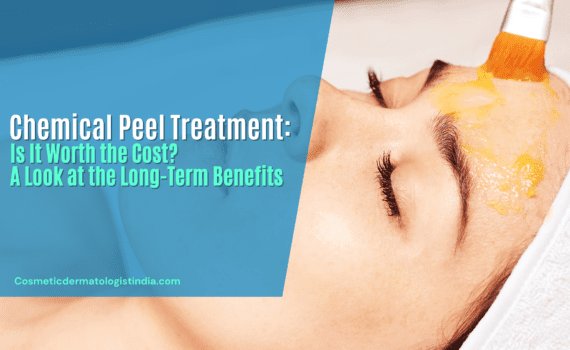
Shedding Light on Blue LED Therapy: A Breakthrough in Acne Treatment
Revealing How Blue LED Therapy Clears Acne
About 90% of the adolescent population around the world suffers from the issues of acne in their growing years. Over the years the dermatology world has developed many acne treatments including retinoids, acids, topical systemic antibiotics, peels etc.
These are used on the skin and often have side effects such as dermatitis, skin irritation, and microbial resistance to antibiotics. The latest development is the use of blue LED therapy for acne and acne scar treatment is becoming a very popular alternative treatment.
Blue light therapy for acne scar treatment in India is a unique treatment for mild to moderate inflammatory acne. Blue light has lower irradiation levels than the usual ablative treatments and directly targets the cells and tissues.
There are two types of acne namely inflammatory and non-inflammatory. They can also have a yellowish secretion in the centre or as nodules or sometimes acne can lead to scar formation which can be inflamed. The inflammatory acne is visible on the skin and is usually looks red and appears as a bump on the skin.
Non inflammatory acne also called comedones grows inside the skin they are either closed or open. Blue light therapy kills the bacteria on the skin and is an FDA-approved treatment for acne vulgaris. There have been no reports of its damage to skin such as cancer or ageing.
Benefits of blue light therapy:
laser treatment for acne scars and LED lights are the two most popular photo modulations used in skin treatments and have proven effective in acne treatments. The blue light therapy targets the bacterium C. acnes which produce porphyrins.
These absorb the ultraviolet and blue light and cause photoexcitation hence the production of singlet oxygen which eventually leads to the destruction of bacteria. Apart from this blue light also reduces the inflammation in the outer layers of the skin.
Its benefits over other acne treatments include
- It’s safe when done by licenced and trained practitioners.
- Do not produce any long-term complications
- There is no need to take antibiotics and drugs as a part of blue light treatment
- It can be used on all parts of the body
- Does not cause acne scarring
- Can be used with other acne therapies
- This can be done using at-home machines too
The antimicrobial effect of the blue light wavelength kills many different kinds of bacteria that often collect in pores and oil glands and cause acne breakouts.
Blue light for acne treatment also helps in getting rid of free radicals on the skin and delays oxidizing and skin ageing.
What is the procedure for blue light therapy?
Blue light therapy for acne treatment is a completely outpatient procedure and is done in the dermatologist’s office. Before the procedure, you will have a consultation with the dermatologist and he will examine your skin type and the extent and type of acne to determine suitability for blue light therapy.
Then they will explain the type of light used, what to expect before, in and after the treatment and how many sessions will be needed.
Before the procedure
- For two weeks prior to blue light sessions avoid applying retinol and other exfoliating skin care products that thin the skin
- The dermatologist will ask you to stop the anti-inflammatory drugs and maybe the blood-thinning medications
- Protect your skin from the sun, avoid sun exposure and tanning beds etc.
At the Fermat’s office
- On the day of the procedure make sure that your face is clean and makeup-free
- The practitioner might give you additional treatments such as facials to open the pores before LED therapy
- They will give you safety goggles to wear to protect the eyes from bright lights
- The health care provider will then make you lie down on your back and put your head in a device to keep your face still. Then the practitioner will place the blue light instrument on the area of the skin that needs to be treated for acne. The device is moved in circular and repetitive movements for a few minutes. The entire treatment session takes about 20-30 minutes to complete.
- There are no injections and the treatment is completely non-invasive and painless. At most your skin might feel a bit warm but there will be no discomfort.
Post-blue light therapy treatment
- Immediately post the acne treatment, the skin might appear pink and red and, in a few days, you might notice some mild skin peeling.
- For a few days afterwards the blue light treatment skin the typical skin care inclusions such as scrubs, exfoliants, topical vitamin A etc.
- Your skin might be sensitive so make sure you don’t touch your skin often.
- Wear sunscreen every day and be vigilant with sunblock during the recovery period.
How many treatment sessions will be needed?
Blue light therapy for acne treatment is a type of phototherapy and is rarely done in a single treatment. You might need several rounds with two to three treatments per week and over the course of four to six weeks depending on the extent of acne.
At-home treatment of acne using blue light devices
Blue light devices are also available as at-home devices in the form of masks, bands and hand-held devices. You can easily buy these online. They are simple to use and come with detailed instructions to follow. For example, in the case of blue light LED masks, you will need to use it for a few minutes each day and sit still when applying them. Similarly, in the case of hand-held devices, you will need to hold the device about 6-10 inches from the acne-infested skin for about 10 minutes every day. It is important that you follow the instructions clearly and don’t overdo the use.
Risks of blue light therapy
It is a safe procedure for most skin types but in some cases, the side effects can be
- Redness
- Itching
- Skin peeling
- Mild skin irritation
In cases when the blue light is not used correctly, the treatment can cause
- Dried pus or blisters on the side of the treatment
- Some skin burns
- Pain at the treated skin
- Dark pigmentation because of overexposure to the sun
Who cannot get blue light therapy treatment?
Blue light therapy is not suitable for the treatment of blackheads, whiteheads and nodular acne. Also, you should avoid this acne treatment if
- You are currently on antibiotic treatment
- Your skin is sensitive to sunlight or prone to sunburn
- You are pregnant
- you are on Accutane
- you have a history of certain conditions such as skin cancer or inherited eye diseases.
Continued use of blue light therapy can help control all types of mild to moderate inflammatory acne
Whether you are using an at-home device or going to a clinic blue light therapy can help you get rid of the acne if you wish to avoid prescription medications. The effects of the treatment may need to be maintained by follow-up treatments if needed. At home, blue light therapy is not as fast or effective as professional treatment but it still helps.









